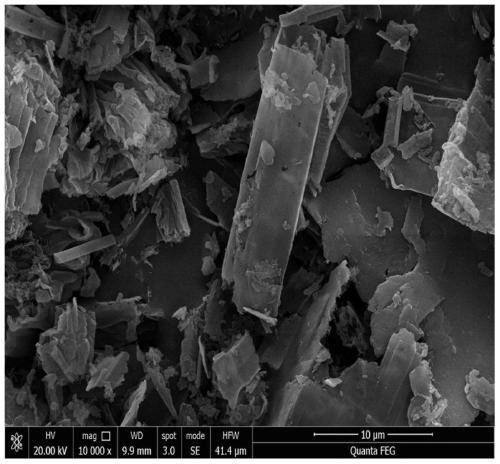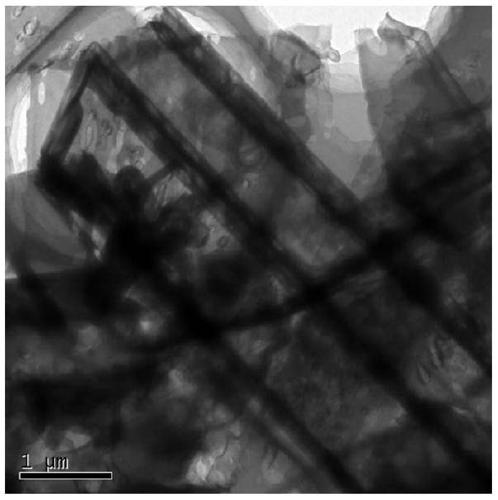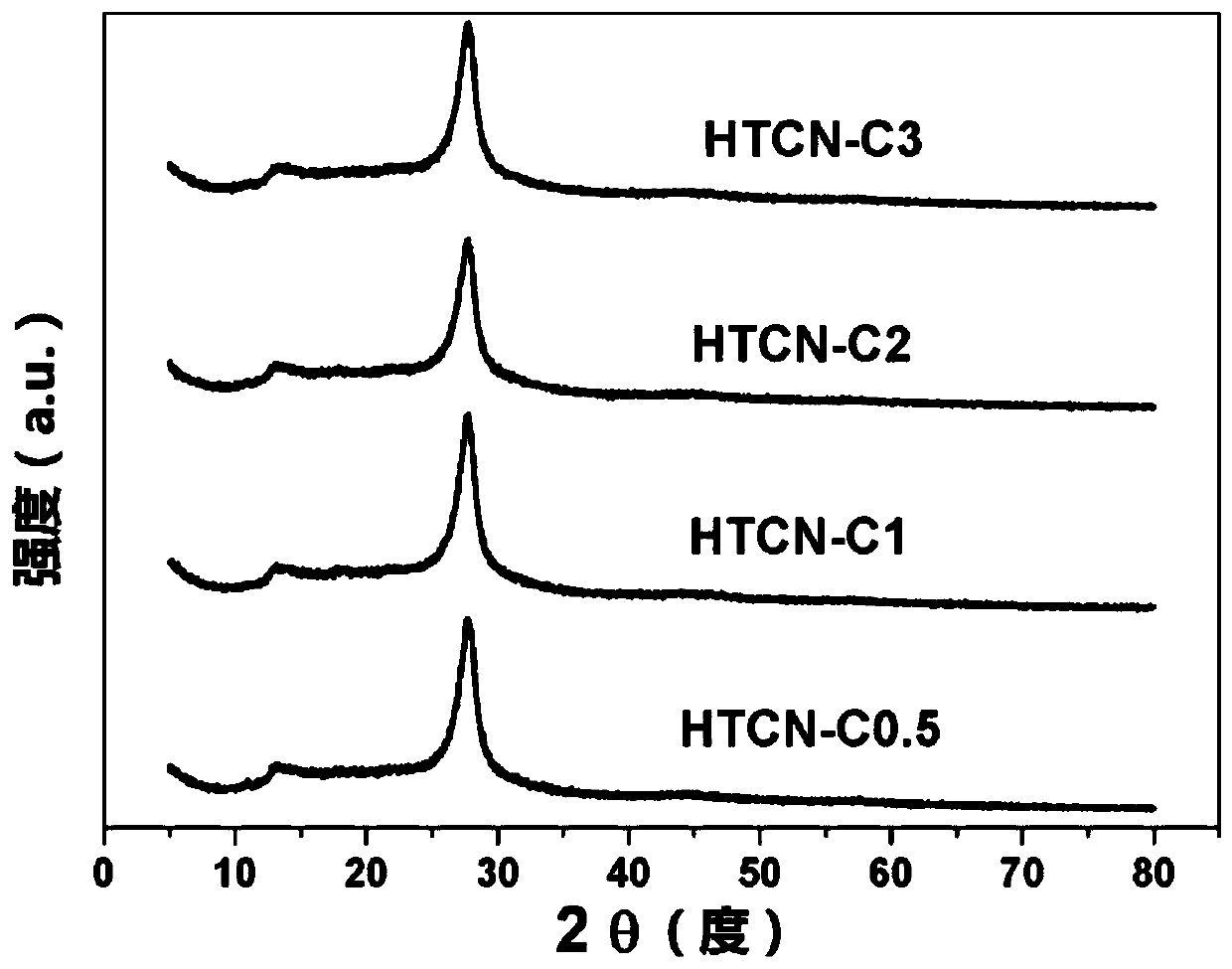Method for treating organic pollutants and photocatalytic sterilization by using modified carbon quantum dots to support hollow tubular carbon nitride photocatalyst
A technology of organic pollutants and carbon quantum dots, applied in chemical instruments and methods, physical/chemical process catalysts, water pollutants, etc. Application value and commercial value, high photocatalytic efficiency, good removal effect
- Summary
- Abstract
- Description
- Claims
- Application Information
AI Technical Summary
Problems solved by technology
Method used
Image
Examples
Embodiment 1
[0057] A method for treating organic pollutants by using a modified carbon quantum dot-loaded hollow tubular carbon nitride photocatalyst, specifically using a modified carbon quantum dot-loaded hollow tubular carbon nitride photocatalyst to treat tetracycline wastewater, comprising the following steps:
[0058] Weigh modified carbon quantum dot-supported hollow tubular carbon nitride photocatalysts (HTCN-C0.5, HTCN-C1, HTCN-C2, HTCN-C3), each 30mg, add to 30mL tetracycline with a concentration of 20mg / L In the wastewater, stir magnetically for 1 hour in the dark at a rotational speed of 400 r / min. After reaching adsorption equilibrium, turn on the light source (300W xenon lamp), and perform photocatalytic reaction under simulated sunlight for 1 hour to complete the degradation of tetracycline.
[0059] In this example, the modified carbon quantum dot-supported hollow tubular carbon nitride photocatalyst (HTCN-C0.5) was used as a carrier, and the hollow tubular carbon nitride w...
Embodiment 3
[0080] A method for photocatalytic sterilization of bacteria using a modified carbon quantum dot-loaded hollow tubular carbon nitride photocatalyst, specifically treating Escherichia coli with a modified carbon quantum dot-loaded hollow tubular carbon nitride photocatalyst, comprising the following steps:
[0081] Weigh 30 mg of the modified carbon quantum dot-loaded hollow tubular carbon nitride photocatalyst (HTCN-C2) prepared in Example 1, add it to 49.5 mL of sterile water, add 0.5 mL, the concentration is 30 mL, and the concentration is 3× 10 9 CFU / mL E. coli solution, at this time the concentration of E. coli in the system was diluted to 3×10 7 CFU / mL, turn on the light source (300W xenon lamp), irradiate under simulated sunlight to carry out photocatalytic sterilization reaction for 1 hour, and complete the inactivation of Escherichia coli.
[0082] Take 100uL of reaction liquid every 15 minutes, then dilute these bacterial liquids appropriately, and finally use the pl...
PUM
| Property | Measurement | Unit |
|---|---|---|
| clearance rate | aaaaa | aaaaa |
Abstract
Description
Claims
Application Information
 Login to View More
Login to View More - R&D
- Intellectual Property
- Life Sciences
- Materials
- Tech Scout
- Unparalleled Data Quality
- Higher Quality Content
- 60% Fewer Hallucinations
Browse by: Latest US Patents, China's latest patents, Technical Efficacy Thesaurus, Application Domain, Technology Topic, Popular Technical Reports.
© 2025 PatSnap. All rights reserved.Legal|Privacy policy|Modern Slavery Act Transparency Statement|Sitemap|About US| Contact US: help@patsnap.com



